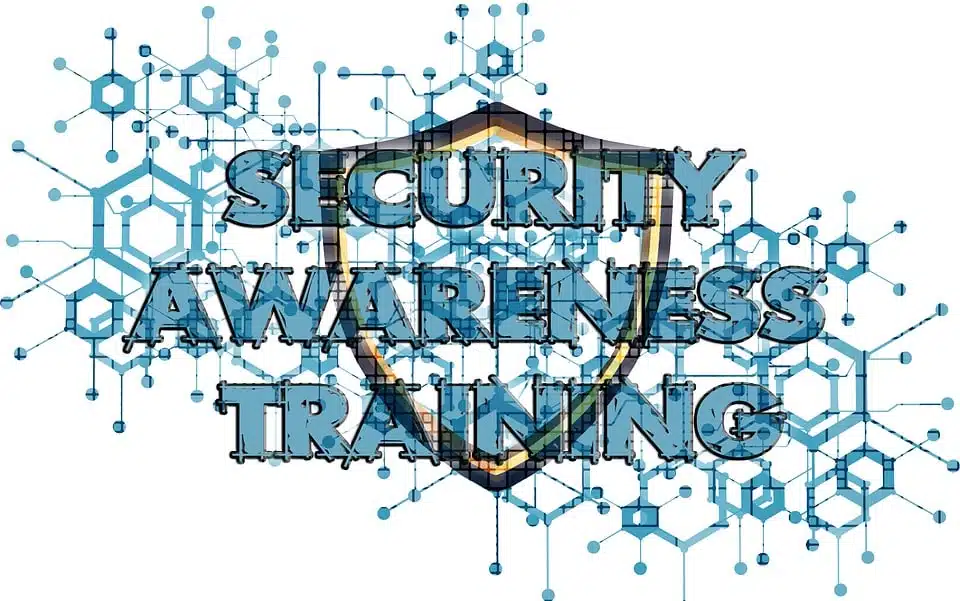Francis Bacon famously wrote that “knowledge is power” over 400 years ago. In the complex world of cybersecurity, the more knowledge your users have, the more power your company has in avoiding preventable breaches.
There’s no denying the outsized role that human error plays in today’s cybersecurity incidents. The World Economic Forum’s 2022 Global Risks Report traced 95 percent of cybersecurity issues to human error. This report adds to the large body of evidence that suggests employees remain the weak link in the security chain.
Organizations clearly must do more to bolster their security culture in the face of an ever-menacing threat landscape. With employees facing a barrage of social engineering attacks daily while interacting with complex IT environments, it’s incumbent on companies to educate users effectively.
But how can you effectively educate users seeing as human error continues to cause such problems? The answer lies in training methods that increase knowledge, drive real behavioral change, and reinforce awareness, all while being user-friendly. This article examines security awareness computer-based training, its benefits, and tips for implementing an effective computer-based training program.

What is security awareness computer-based training?
Security awareness computer-based training (CBT) provides cybersecurity education with interactive software-based modules that users access on their devices, such as desktop workstations, laptops, tablets, and smartphones. Companies can utilize computer-based training solutions as cloud-based services or on-premise deployments.
The other types of learning experiences that companies opt for to improve security awareness include traditional classroom-based learning with lectures and simulated cyber attacks that attempt to test user awareness and enhance knowledge. The most common approach at large and medium-sized companies combines classroom learning and simulated attacks.
Classroom-based learning is often too generic and covers too much ground in one sitting. Furthermore, these lectures are often approached as a compliance box to tick rather than trying to drive actionable security culture changes. Simulated attacks are helpful, but if users are made to feel like they’ve failed a test rather than practiced knowledge, they can suffer from a hit to their morale and an associated distrust in your security program.
The ACE framework
If one thing is clear from the deluge of statistics that highlight the persistence of human error in cybersecurity breaches, it’s that generic training material designed to check a compliance box isn’t sufficient. To help drive meaningful changes in security awareness, consider the ACE framework as a helpful training model:
- Assess—Establish an accurate baseline of current user cybersecurity knowledge and awareness (simulated attacks come in handy here).
- Change behavior—Drive actionable change with adaptive learning approaches, including shorter learning sequences, role-specific modules, and different communication methods. Ensure you reinforce these behavioral changes with an ongoing training approach.
- Evaluate—Measure and evaluate your program’s effectiveness by analyzing key metrics and KPIs.
Computer-based training is an excellent candidate to align with the ACE framework because this training method is geared towards being more employee-centered and tailored to specific roles/contexts. Furthermore, computer-based training easily accommodates the evaluation phase by collecting relevant metrics and helping you analyze them.
Critical security awareness training topics to cover
Some crucial security awareness training topics to cover in your program include:
- Phishing and other social engineering attacks
- How to use the Internet safely
- The fundamentals of encryption
- How to securely back up data
- Setting secure passwords and strengthening authentication with multifactor authentication (MFA)
- Safe remote working practices
- The risks of public Wi-Fi and how to use these networks safely
- Best security practices when using cloud services
- Malware, ransomware, and how these attacks typically occur

4 benefits of security awareness computer-based training
1. Dynamic
Your business is dynamic—security awareness training should be too. Computer-based training can customize content based on employee roles and current knowledge levels to go beyond a one-size-fits-all approach. CBT’s dynamism also adapts to the different native languages spoken among sprawling modern workforces with content localization.
2. Less overwhelming
The shorter learning snippets in computer-based training make security awareness training a far less daunting task than an employee having to sit down for two or three hours in a room and hoping they absorb all the information. Employees can more easily pace themselves and even go back over the training material to clarify points they didn’t understand.
3. Advanced analytics
Security awareness computer-based training is primed for collecting advanced analytics that helps you better monitor performance and track improvements across your entire organization. Instead of having to create manual dashboards and carry out assessments, computer-based solutions can automatically collect relevant data and create powerful dashboards and reports.
4. Minimal disruption to the working day
Your employees are more likely to engage with security training when it doesn’t cause a backlog in their other important tasks. This minimal disruption to the working day also benefits your company because traditional classroom-based learning disrupts the working day for multiple employees, likely across several hours.
9 steps to get started with a security awareness computer-based training program.
1. Get buy-in from company leadership
A major change to security awareness training methods starts with buy-in from company executives. Make sure you sell them on why CBT is better suited to drive behavior change, improve knowledge, and reinforce digital learning versus traditional classroom learning methods.
2. Research security awareness computer-based training vendors
As recognition of the value of security awareness computer-based training increases, new vendors are cropping up all the time. Do your due diligence and make sure the platform aligns with what you’re looking for. Some solutions even brand learning materials according to your company’s look and feel, which may prove a big selling point.
3. Build a program strategy and communicate it
Armed with buy-in and an appropriate solution, build a strategy and communicate it to everyone. In particular, convey to employees how computer-based training is better suited to integrating with their regular work routine while delivering a more adaptive approach to cybersecurity learning.
4. Incorporate multiple media types
Relying on just slideshows is a recipe for training fatigue. It’s important to mix things up by incorporating multiple media types, including text, animations, videos, quizzes, newsletters, and more.
5. Gamify your training
A deterrent common in many security awareness training approaches is that people associate this training with negativity. Gamified training incorporates game design elements into cybersecurity learning, such as leveling up, rewards, badges, streaks, motivational language, and other fun features.
6. Space out training and make it repeatable
Don’t inundate employees with large chunks of training delivered within short timeframes. Instead, space out training to put less time-sensitive pressure into it and to help avoid situations where users just click through their training as fast as possible without ever really paying full attention. It’s also vital to allow users to easily review what they’ve learned.
7. Make it personalized
Different employees interact with and access various apps and infrastructures in their daily work. Access permissions also vary according to seniority and role. Furthermore, social engineering scams vary in sophistication based on who they target. Untargeted training that ignores these nuances can do more harm than good by providing false confidence levels in your security culture.
8. Utilise practical or simulation-based training
Don’t neglect the value of simulation-based training and other methods that involve putting knowledge into practice. Opt for a computer-based solution allowing you to carry out high-quality simulated attack campaigns.
9. Incorporate key performance indicators
Key performance indicators (KPIs) help assess the impact of security awareness programs and identify gaps in knowledge. When selecting KPIs, try to answer questions such as the cost impact of your security awareness training, how the training is driving behavioral change, and what risk impact the training is having.
Why computer-based training is an effective approach
Computer-based cybersecurity training is an effective approach to an enhanced security culture for your business. Flexible scheduling, self-paced learning, personalized content, and real-time feedback are all possible with computer-based training. This training can also simulate realistic scenarios and provide hands-on experience without risking actual security breaches. From an IT perspective, computer-based training is more cost-effective and accessible than in-person training, making it easier to train many individuals.
CybeReady’s complete security awareness solution provides your organization with a fully-managed training program that transforms security culture. Powered by machine learning, you get security awareness and phishing simulations from one computer-based platform. Readiness straight out of the box reduces the burden of running security awareness training programs, shifting the outcome from ticking boxes to driving lasting behavioral changes that measurably reduce risk.













